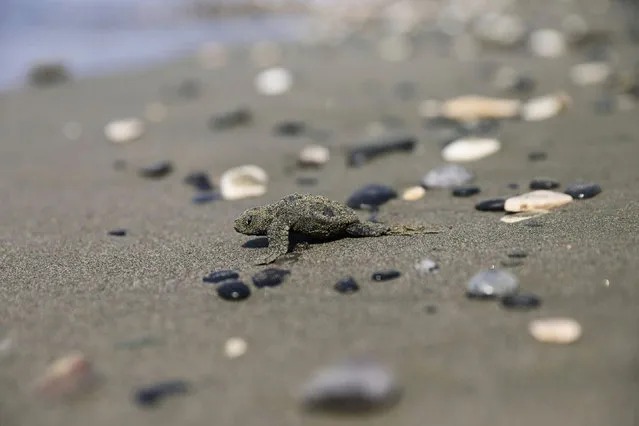
A newly hatched baby sea turtle makes its way into the Mediterranean Sea for the first time, on a beach in Pervolia, Cyprus on August 27, 2020. (Photo by Yiannis Kourtoglou/Reuters)
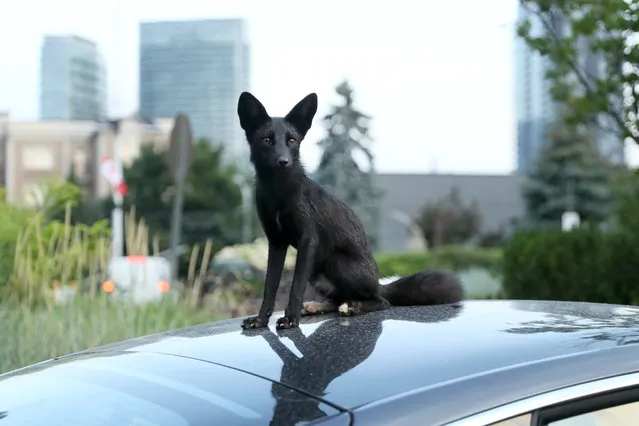
A rare young melanistic fox rests atop a Tesla Model S 100D near a condo development in west Toronto, Canada on August 25, 2020, after playing with its sister nearby. More commonly known as a silver fox, it is a genetic variant of the more common red fox. (Photo by Christopher Drost/Zuma Press/eyevine)
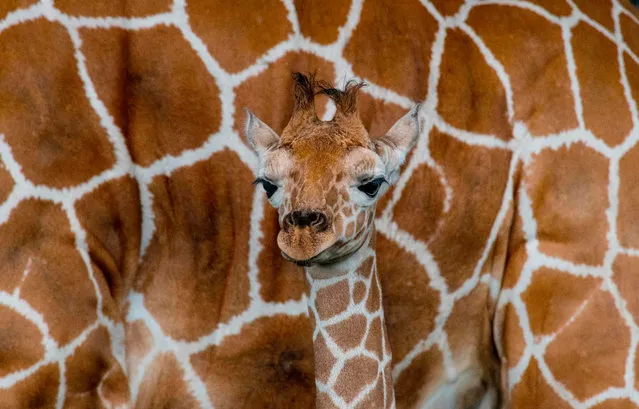
A 22-day-old giraffe calf named Zafira is seen next to her mother Ileana at the La Ponderosa Adventure Park in Guanacaste, Costa Rica, on August 22, 2020, amid the COVID-19 novel coronavirus pandemic. The 100-hectare park, with more than 300 animals of thirteen different species, mainly of African origin, is attracting local and international visitors now that sanitary measures against the spread of COVID-19 are easing. (Photo by Ezequiel Becerra/AFP Photo)
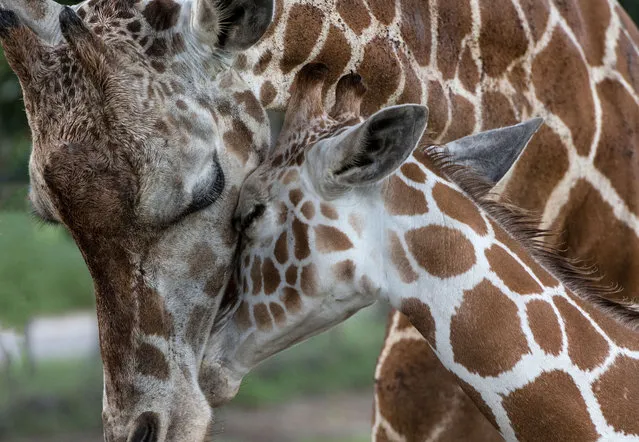
A 22-day-old giraffe calf named Zafira is seen next to her mother Ileana at the La Ponderosa Adventure Park in Guanacaste, Costa Rica, on August 22, 2020, amid the COVID-19 novel coronavirus pandemic. (Photo by Ezequiel Becerra/AFP Photo)
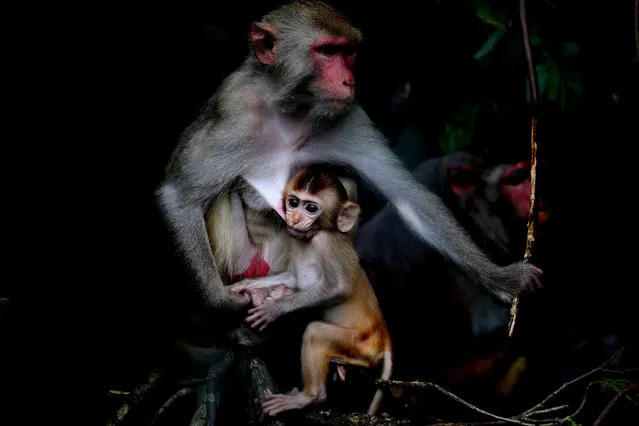
A macaque monkey at Hlawga wildlife park on the outskirts of Yangon, Myanmar on August 23, 2020. (Photo by Xinhua News Agency/Rex Features/Shutterstock)
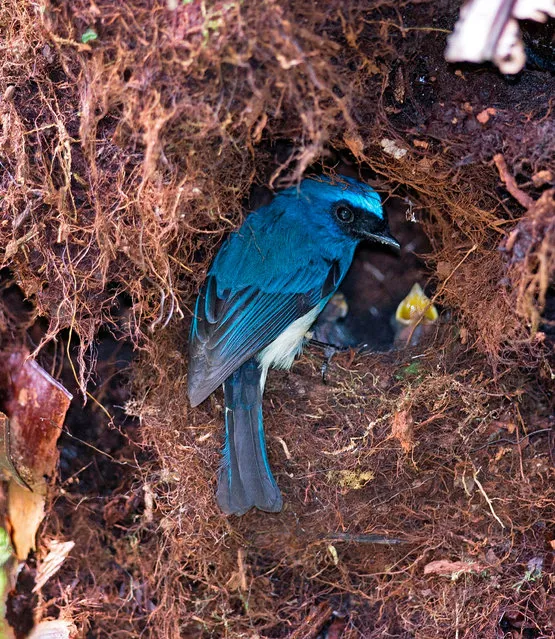
This undated handout picture released on August 24, 2020 by the USGS, Montana Cooperative Wildlife Research Unit shows an indigo flycatcher (Eumyias indigo) at nest in Kinabalu Park in Sabah, Malaysia. Songbirds in tropical rainforests curtail their reproduction to help them survive droughts, according to a study on August 24, 2020. Species with longer lifespans were better able to cope with this environmental volatility than previously thought, researchers found. (Photo by Thomas E. Martin/USGS, Montana Cooperative Wildli/AFP Photo)
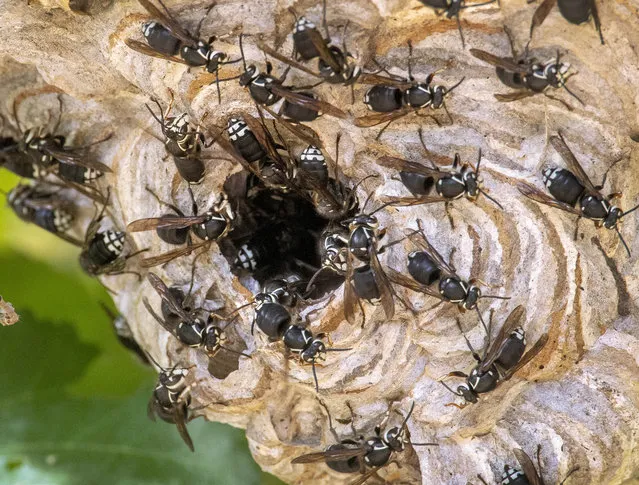
Baldfaced hornets swarm out of their beachball sized nest attached to a tree on a hillside near Elkton in rural western Oregon on August 21, 2020. Baldfaced hornets are considered to be beneficial due to their predation of flies, caterpillars, and spiders. However, their aggressive defensive nature makes them a threat to humans who disturb their nests or wander close. The baldfaced hornet has a unique defense in that it can squirt or spray venom from the stinger into the eyes of nest intruders. (Photo by Robin Loznak/ZUMA Wire/Rex Features/Shutterstock)
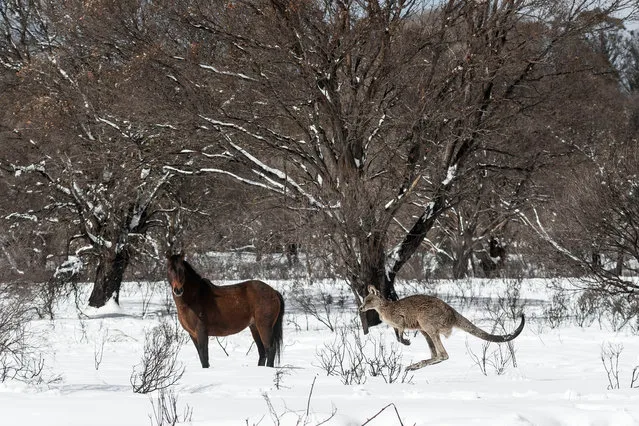
A Brumby and an Eastern Grey Kangaroo are seen in the Yarrangobilly area of the Kosciuszko National Park on August 24, 2020 in Kosciuszko National Park, Australia. Free-roaming feral horses, known as Brumbies, are found across Australia. Believed to be descended from animals imported by early British colonialists, the Brumby population is estimated to be in the thousands, with the highest concentration of horses roaming Australia's alpine region, which straddles the state border of Victoria and New South Wales. With large numbers of Brumbies trampling through protected National Parks, their fate has long been a subject of heated debate. On one side are those that want the total eradication of the animals – those who consider them a feral, invasive and destructive species. At the other end are those that advocate for the protection of what are viewed as “heritage animals“, so named for their role in the mythology of the high country, immortalised in poems such as Banjo Paterson's “The Man from Snowy River”. In New South Wales the current policy approach is an attempt at finding a middle ground. National Parks New South Wales authorities are currently reducing Brumby numbers via the 'passive capture' of the animals - horses are lured with food into gated traps. The animals are then taken to a holding area before being sent out for “re-homing”. Nikki Alberts, who runs 'White Alpine Equine' in Adaminaby is a re-homing volunteer, who takes on the expense of housing and breaking in Brumbies that come to her. Nikki has just taken on six new wild Brumbies, alongside another two she has been working with since late October 2019. (Photo by Brook Mitchell/Getty Images)
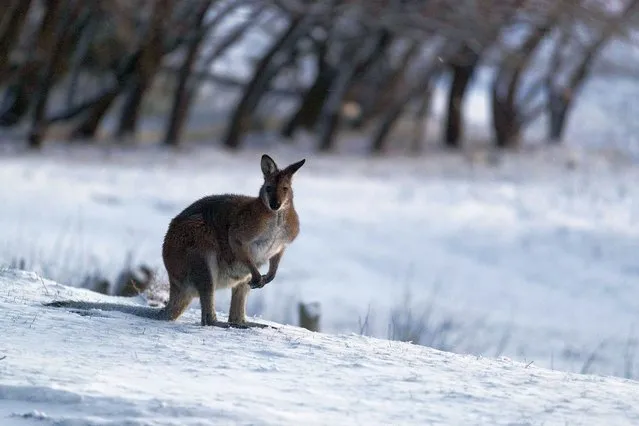
A wallaby walks on a blanket of snow near Lake Eucumbene in Old Adaminaby on August 22, 2020 in Old Adaminaby, Australia. (Photo by Brook Mitchell/Getty Images)
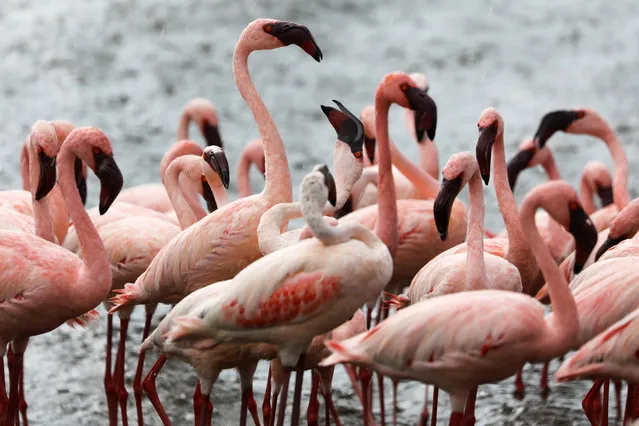
A flamboyance of flamingos crowds together as rain falls on Lake Bogoria, in Baringo County, Kenya, August 26, 2020. (Photo by Baz Ratner/Reuters)
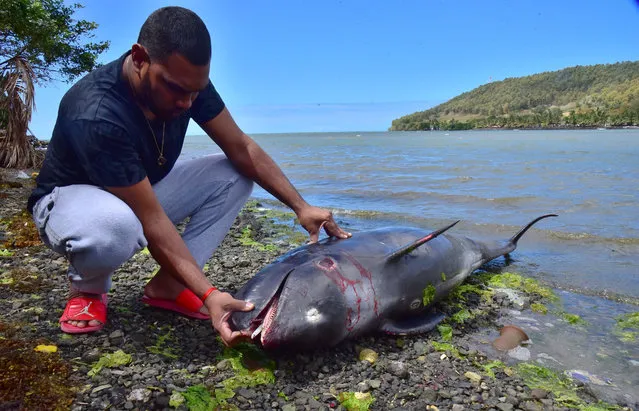
An unidentified man looks at the carcass of a dolphin that died and was washed up on shore at the Grand Sable, Mauritius on August 26, 2020. (Photo by Beekash Roopun/L'Express Maurice via Reuters)
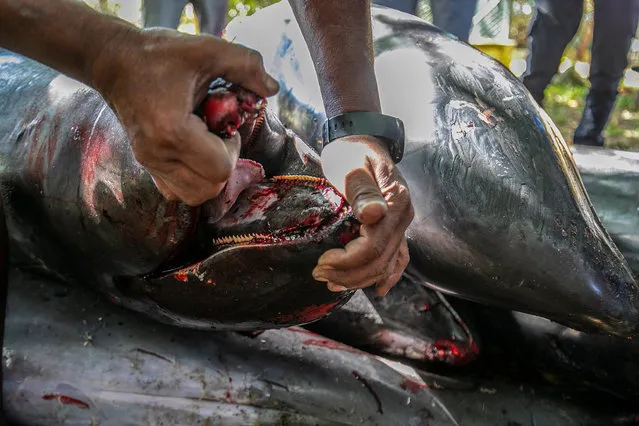
A man holds open the mouth of a dead Melon-headed whale (Peponocephala electra) also known as Electra dolphin showing what appears to be oil in the mouth after it washed up with eight others in Grand Sable, Mauritius, 26 August 2020. Local reports indicate nine melon-headed whales washed up. According to Greenpeace Africa the carcasses have been taken for post mortem analysis to establish cause of death and if there is a connection with the oil spill from the MV Wakashio, a Japanese owned Panama-flagged bulk carrier after it ran aground off the southeast coast of Mauritius spilling more than 1000 tons of fuel. (Photo by Laura Morosoli/EPA/EFE)
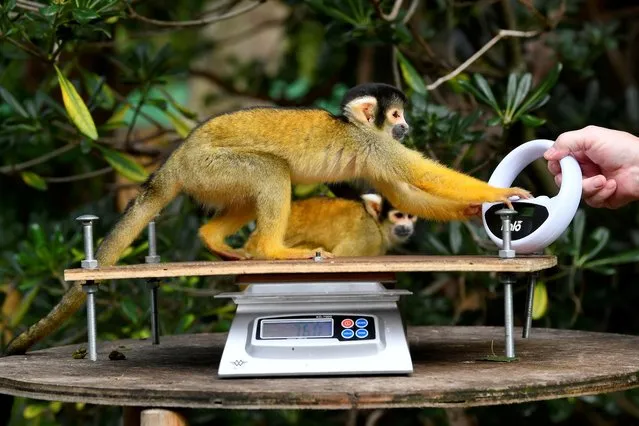
Zoo keeper Tony Cholerton uses an electronic identification chip reader on a squirrel monkey as it stands on weighing scales at the ZSL London Zoo 2020 weigh-in and measurement, in London, Britain, August 27, 2020. (Photo by Toby Melville/Reuters)
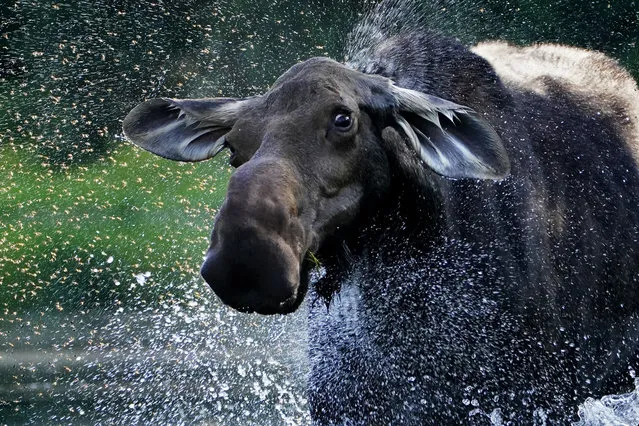
A cow moose shakes water and a swarm of insects from its fur while feeding in Lobster Stream, Thursday, August 13, 2020, in Lobster Township, Maine. While summer insects are a nuisance to the animals, winter ticks have killed thousands of moose in New England. (Photo by Robert F. Bukaty/AP Photo)
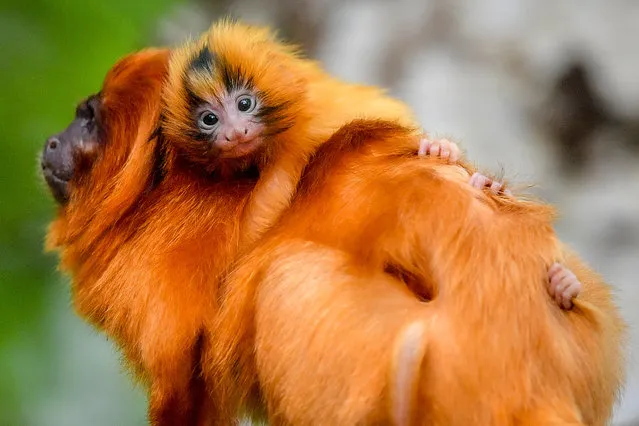
One of two Twin golden lion tamarins, which were born at Bristol Zoo Gardens to their mum Missy and dad Dourado, cling to their back as they forage around the trees on August 23, 2020. (Photo by Ben Birchall/PA Images via Getty Images)
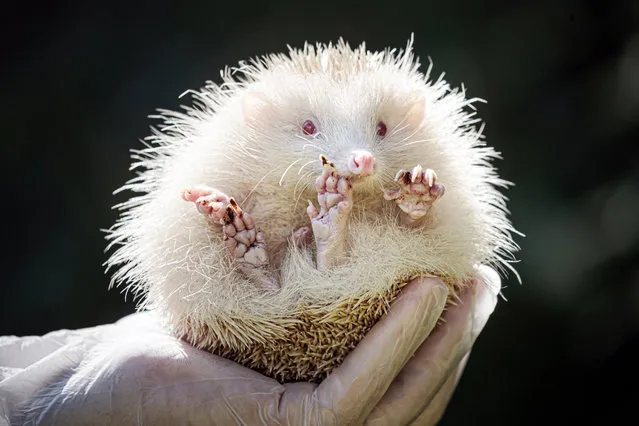
Jack Frost, an ultra rare albino Hedgehog, that has been rescued by Prickly Pigs Hedgehog Rescue in Otley, West Yorkshire on August 23, 2020. (Photo by Danny Lawson/PA Images via Getty Images)
30 Aug 2020 00:03:00,
post received
0 comments
